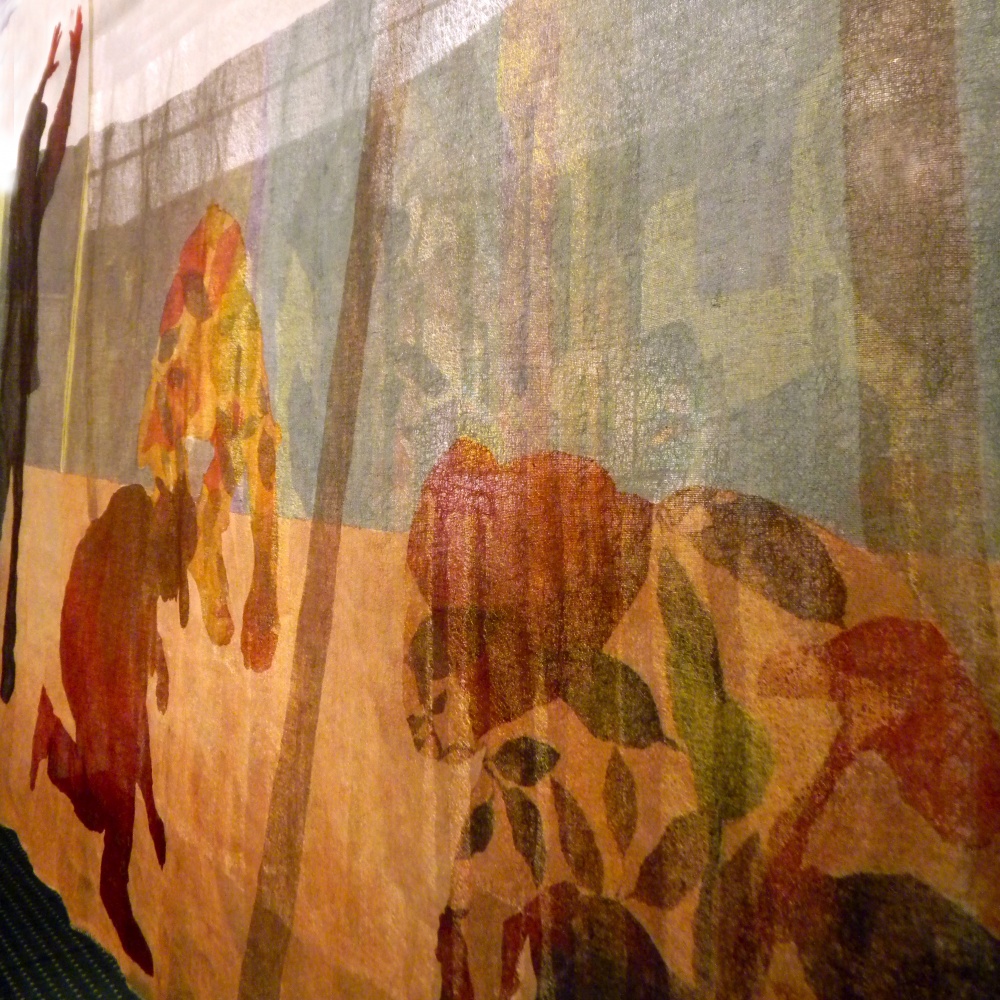For hundreds of years, shade tobacco was a major export crop grown in parts of Connecticut and western Massachusetts. The barns where tobacco leaves were hung to dry still dot the landscape, but gone for the most part are the acres and acres of fields, which in the summer were filled with tobacco plants strung up under gauzy tents.
Rhode Island based Artist Deborah Baronas remembers them well. She says she used to love seeing the tents covering the fields.
“It [was] like a Christo piece!” Baronas says. “They were all over the place! Go to the top of Mt. Sugarloaf [in South Deerfield, Mass.] and look down and it was just an amazing site!”
But she adds, “Things have changed. And I find that sad, and yet you accept it because that’s just the way life is.”
Baronas grew up in the Pioneer Valley. Now, from her studio in Warren, R.I., she makes art about the field workers. Like many people from the area, she was one of them, spending her teenage summers picking crops on farms in Deerfield, South Deerfield and Whatley, Mass.
She left farming after high school to attend RISD in Providence, R.I. After college, she had a several decade career designing fabric for textile mills At some point with much of that industry now overseas, Baronas says she was unable to find work.
This experience, and the end of shade tobacco farming has inspired her exhibit “Work and Culture / Into the Shade” on display through April at the Wisteriahurst Museum in Holyoke, Massachusetts. Large and small pieces fill an entire Gilded-Age room at the mansion.
“I’ve divided the room into the two projects, so that one half has the mill project [and the other the shade tobacco],” Baronas says. “And the first thing you see are these gossamer like hangings of the workers.”
The life-size workers are painted on enormous swaths of material hanging freely from the ceiling. They hit you in the eye as soon as you walk in the room, and they are so big, they could hit you, physically, if you’re not careful. Baronas painted the figures – young and the old, from around the U.S., Jamaica and Puerto Rico – on what looks like cheese cloth. Several scrims hang adjacent to each other and create an effect of workers in a field. As viewers pass between them, the material sways, as if you too were under the tent. And being under the tent was an amazing experience, says Baronas.
“It was hot. It was smelly. It was painful!” Baronas says. “Girls and boys has separate jobs.”
It was the girls, Baronas says, “who in the early summer tied the saplings to the wires at the top of the tents. And broke the string with [their] hands, which were taped up, and of course by the end of the first week you were bleeding.”
Hands are central in the tobacco fields and in the mills and when Baronas used to design fabrics she says she often thought about the hands of those 19th and 20th century workers that ran the looms. That wrapped the thread. That made the cloth. While the demise of industries she knows so well inspires her work, some of the art gets even more personal.
Standing in front of a traditional oil painting of a field along a local farm road, looking south toward the Holyoke Mountain Range, Baronas says this piece is a story about farming and it’s s one of her firsts. She says she painted it right after her father’s death.
“It’s about tobacco farming. Dairy farming. And it’s my dad’s story, and my grandfather’s story.” And, Baronas adds, “my mother’s story.”
Baronas says the focus of this work is not the decline of shade tobacco. It’s the workers themselves, the beauty of the plants, the sensuous light inside those tents, and the hardships of farming. She sometimes writes a story on her pieces. One piece has this text overlaying the images:
“Tobacco into the shade. Working and sweating until the salt hurts your cheeks and the sun burns your face and your fingers bleed from the tape and the string and the workers keep coming and going and doing, sewing, planting, digging, weeding, picking, sewing, picking selling, bleeding , and crying and wanting to be home.”
Deborah Baronas had no idea her art would go in a historical direction, but she says she plans to continue on this route. She wants to make a documentary about the end of certain industries, interviewing workers who can tell her more about life in the mills and life in the shade of the tobacco tents.
